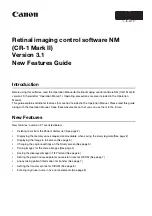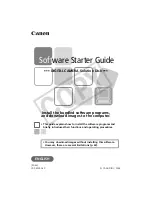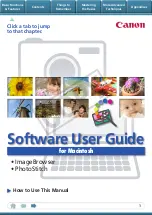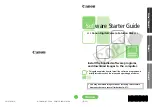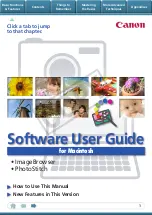
ThinApp User’s Guide
12
VMware, Inc.
Applications That ThinApp Cannot Virtualize
ThinApp
cannot
convert
some
applications
into
virtual
applications
and
might
block
certain
application
functions.
You
must
use
traditional
installation
technologies
to
deploy
some
application
types.
Applications
that
do
not
natively
support
the
deployment
operating
system.
If
an
operating
system
does
not
support
the
native
installation
of
an
application,
that
operating
system
is
not
a
supported
ThinApp
deployment
platform
for
that
application.
Applications
requiring
installation
of
kernel
‐
mode
device
drivers
ODBC
drivers
work
because
they
are
user
mode
drivers.
Antivirus
and
personal
firewalls
Scanner
drivers
and
printer
drivers
Some
VPN
clients
Device Drivers
Applications
that
require
device
drivers
do
not
work
when
packaged
with
ThinApp.
You
must
install
those
device
drivers
in
their
original
format
on
the
host
computer.
Because
ThinApp
does
not
support
virtualized
device
drivers,
you
cannot
use
ThinApp
to
virtualize
antivirus,
VPN
clients,
personal
firewalls,
and
disk
and
volume
mounting
‐
related
utilities.
If
you
capture
Adobe
Acrobat,
you
can
modify
and
save
files,
but
you
cannot
use
the
printer
driver
that
enables
you
to
save
documents
to
format.
Shell Integration
Some
applications
that
provide
shell
integration
have
reduced
functions
when
they
exist
in
a
ThinApp
package.
For
example,
a
virtual
application
that
integrates
with
Windows
Explorer
cannot
add
specific
entries
to
the
Windows
Explorer
context
menus.
DCOM Services that are Accessible on a Network
ThinApp
isolates
COM
and
DCOM
services.
Applications
that
install
DCOM
services
are
accessible
on
the
local
computer
only
by
other
captured
applications
running
in
the
same
ThinApp
sandbox.
ThinApp
supports
virtual
DCOM
and
COM
on
the
same
computer
but
does
not
support
network
DCOM.
Global Hook Dynamic Link Libraries
Some
applications
use
the
SetWindowsHookEx
API
function
to
add
a
DLL
file
to
all
processes
on
the
host
computer.
The
DLL
intercepts
Windows
messages
to
capture
keyboard
and
mouse
input
from
other
applications.
ThinApp
ignores
requests
from
applications
that
use
the
SetWindowsHookEx
function
to
try
to
install
global
hook
DLLs.
ThinApp
might
reduce
the
application
functions.
Recommendations for Installing ThinApp
When
you
install
ThinApp,
consider
the
recommendations
and
best
practices
for
the
software.
Using a Clean Computer
VMware
recommends
using
a
clean
computer
to
install
ThinApp
because
the
environment
affects
the
application
capture
process.
A
clean
computer
is
a
physical
or
virtual
machine
with
only
a
Windows
operating
system
installed.
In
a
corporate
environment
where
you
have
a
base
desktop
image,
the
base
desktop
image
is
your
clean
computer.
The
desktop
computer
might
already
have
some
components
and
libraries
installed.
Summary of Contents for THINAPP 4.6 - MIGRATING APPLICATIONS TECHNICAL NOTE
Page 38: ...ThinApp User s Guide 38 VMware Inc...
Page 114: ...ThinApp User s Guide 114 VMware Inc...
Page 136: ...ThinApp User s Guide 136 VMware Inc...




























